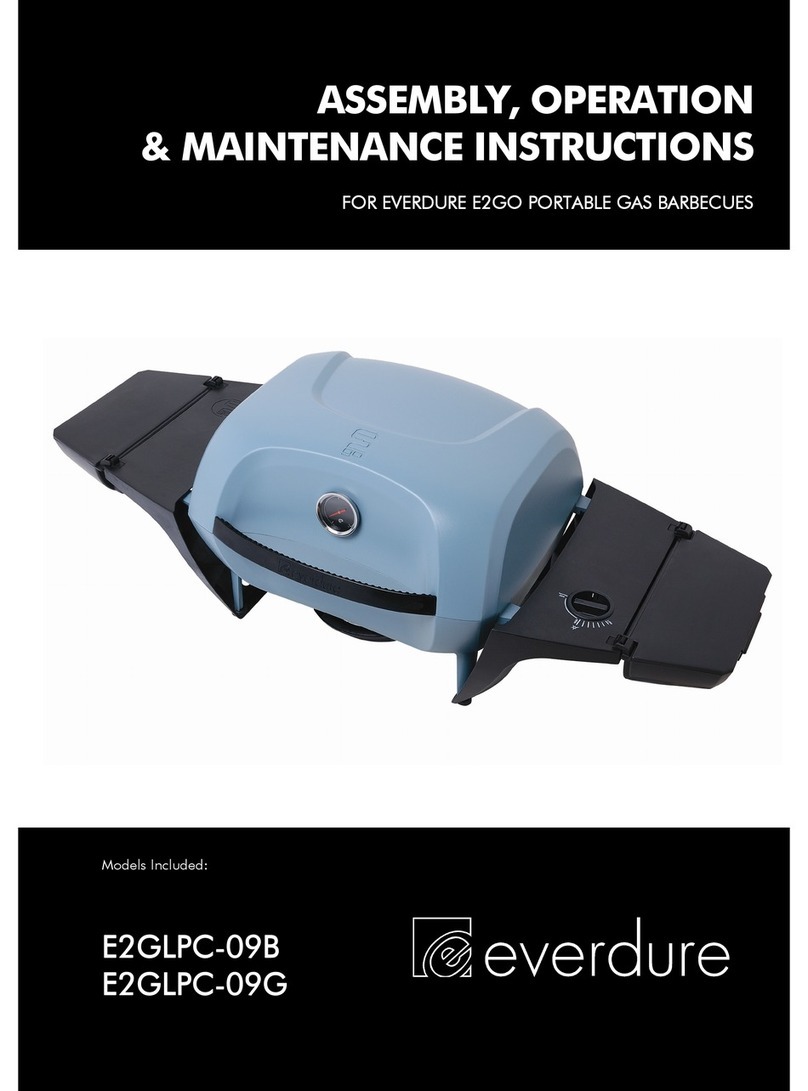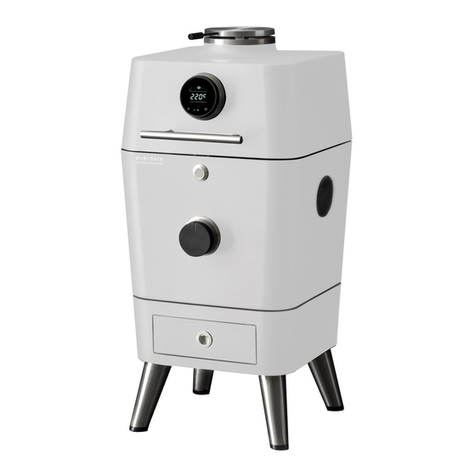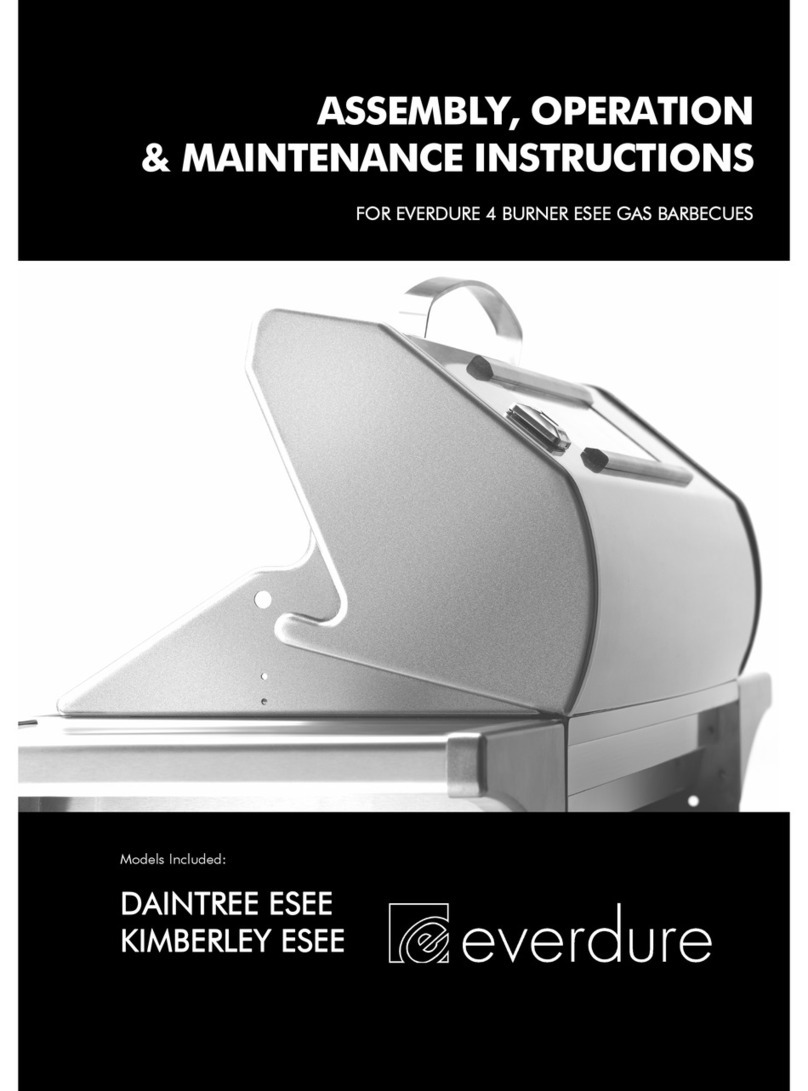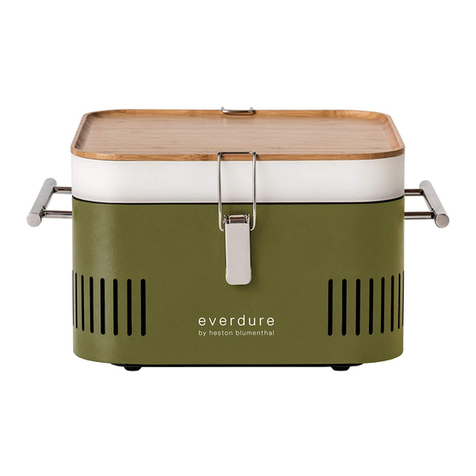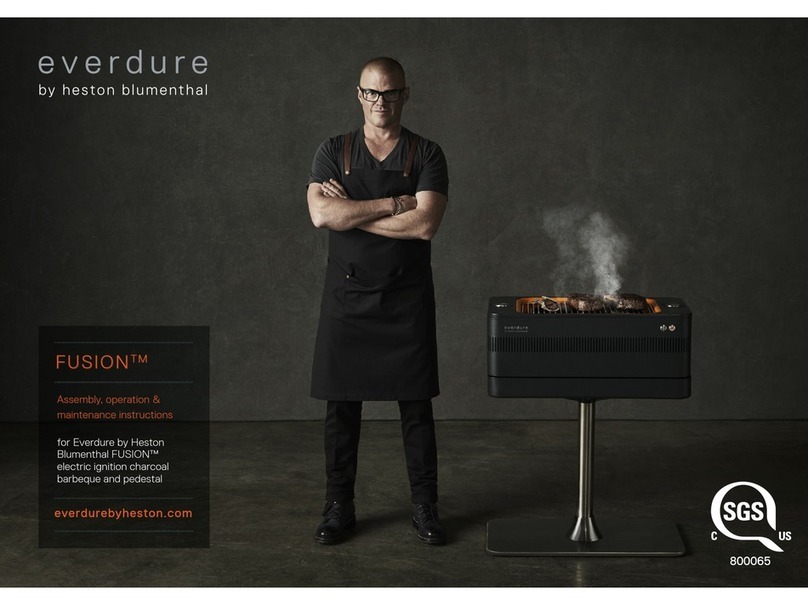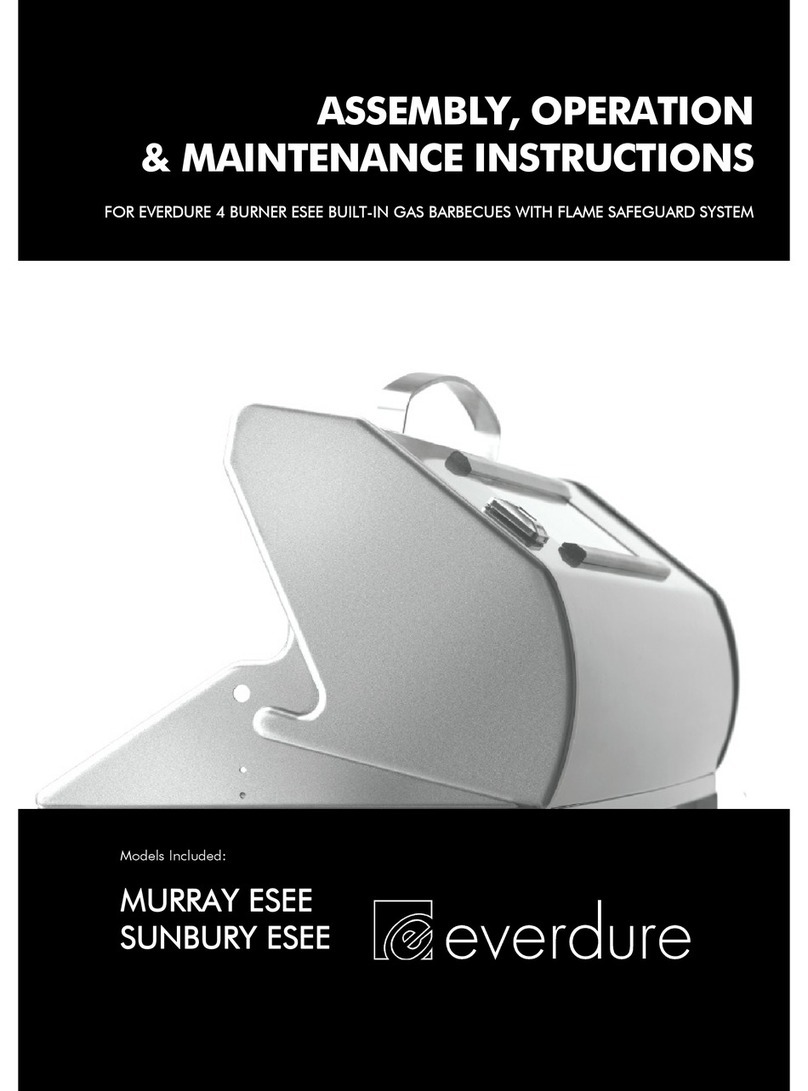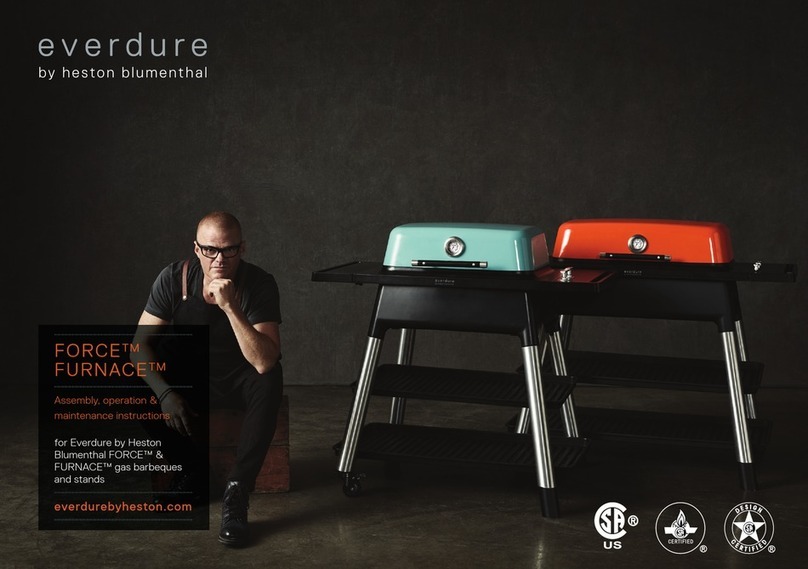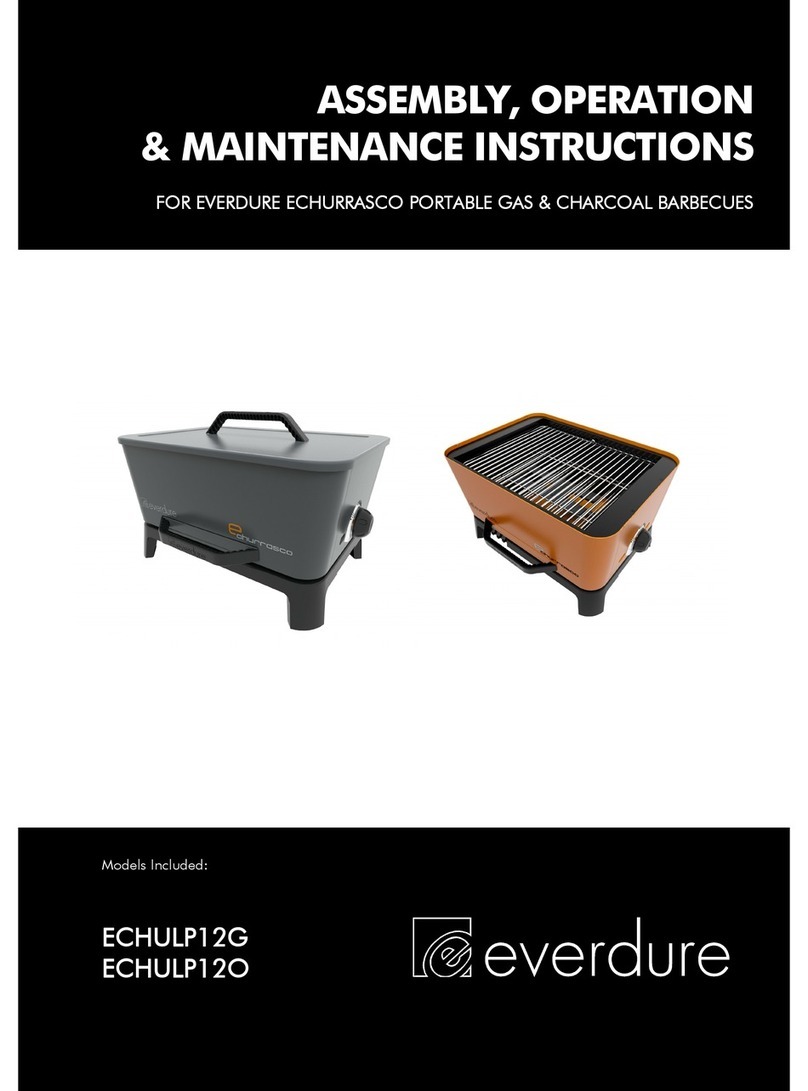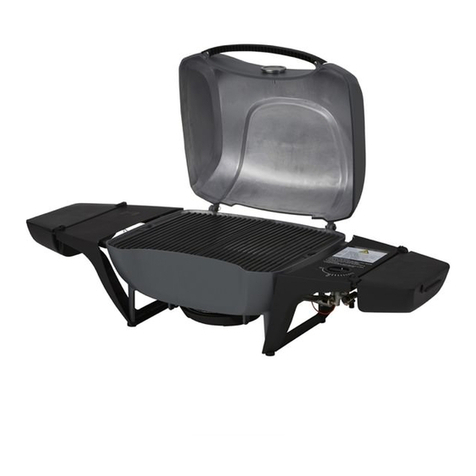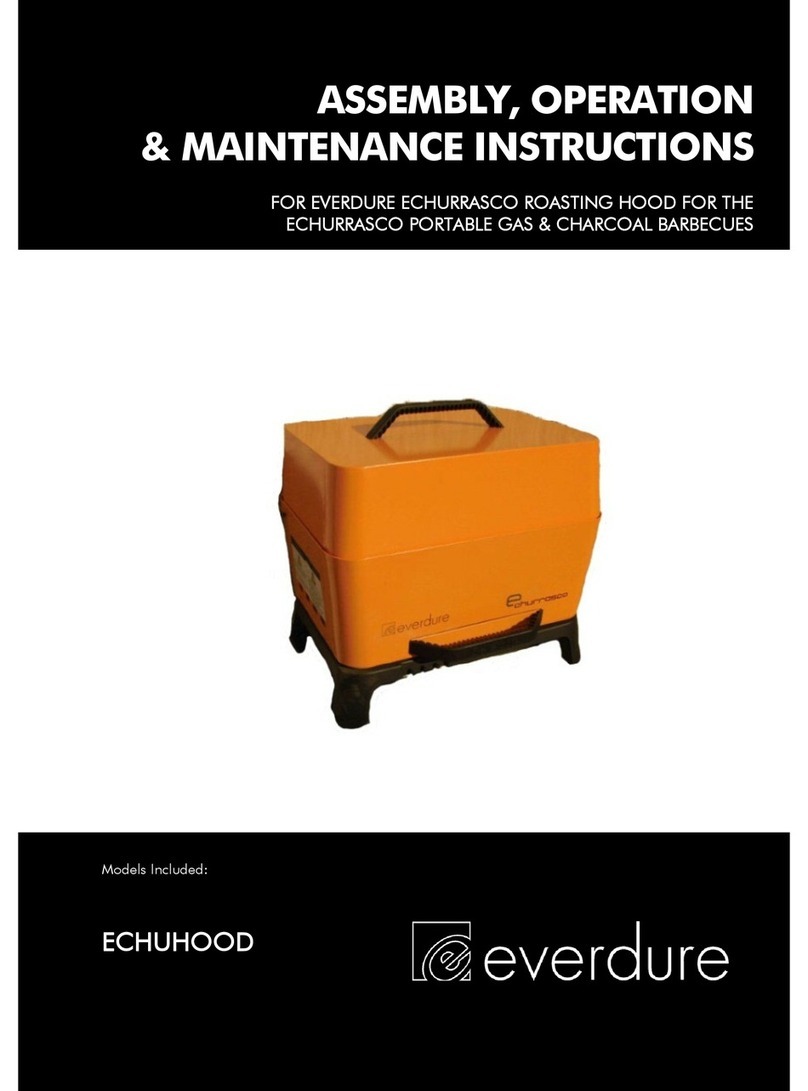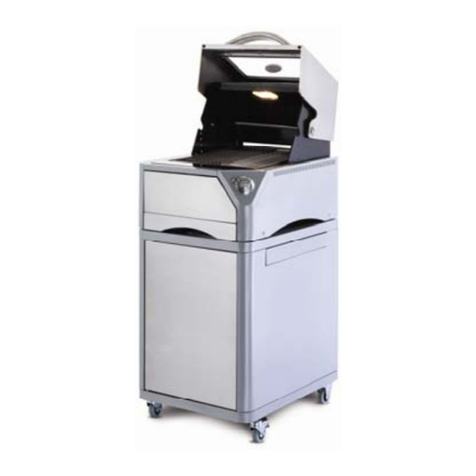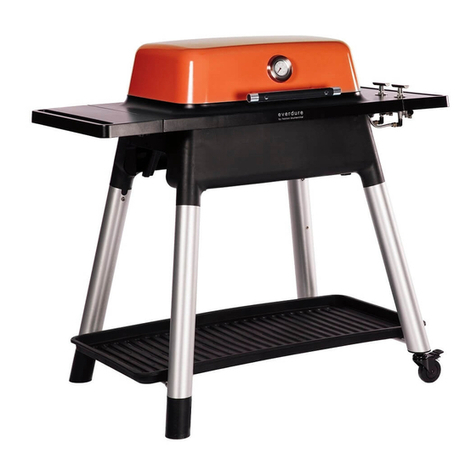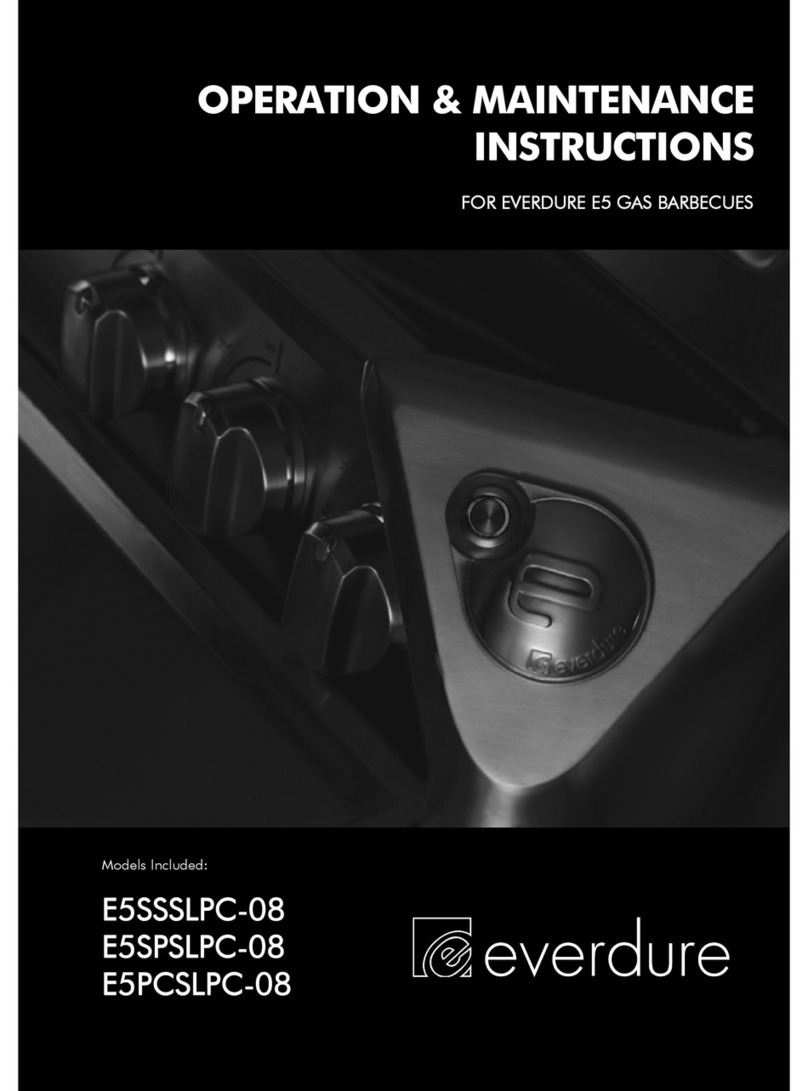that any surplus fat and grease will drip into the water. The water will also keep the food moist during the cooking
process. After the pre heat time is complete, open the roasting hood and place the roasting tin centrally onto the
grill plate. Turn the centre 2 burners off and close the roasting hood. The highest setting for the duration of the
cooking is with both outer burners on high, but the temperature can be fine tuned by adjusting the outer burners
up and down to give the ideal cooking temperature. Naturally the degree of heat required will very much depend
on the weather conditions at the time of cooking. A similar set-up can be used when using a rotisserie, making
sure that oil and fat cannot drip directly onto the burners.
A guide for roasting beef is to allow 30 to 50 minutes cooking time per kilogram for rare and well done
respectively. It is recommended that for evenness, the item being cooked is turned over at approximately half way
through the cooking time. Ensure that the centre burners remain Off, leaving only the two outside burners on Hi
during the cooking process. This is most important as severe overheating and spoilt food will result if the two
central burners are left on Hi. This is a general guide for roasting only – please check www.everdure.com for any
updated cooking guides.
AFTER COOKING
1. When finished, make sure burner control knobs are turned OFF.
2. TURN OFF THE GAS SUPPLY AT THE CYLINDER.
3. After cooking and whilst the barbecue is still warm, remove scraps from the grill with a scraper.
4. Excess fat and meat scraps can be scraped off the vapouriser by removing the grill to gain access.
WARNING: Some surfaces may still be hot – please use protective gloves.
5. Clean the fat tray and replace the aluminium foil after or before each use of the appliance.
6. Once the barbecue is cool close the roasting hood and wipe off any fat splatter from the trolley with a clean
rag.
CLEANING & STORAGE
CLEANING
Before cleaning, ensure the appliance has cooled and is safe to touch. Painted surfaces can be cleaned using a
mild household detergent or cleaner and a clean cloth (do not use scourers or harsh detergents). It is advisable
to test cleaners on a small section of the appliance first. The brass burner and spill bowl of the wok burner can
be cleaned by removing the trivet. NEVER use paint thinners or similar solvents for cleaning and NEVER pour
cold water over hot surfaces. Over time, stainless steel will be affected by “tea staining” or “bronzing” (brown
discoloration of stainless steel). This can be reduced by washing the surface with mild detergent and warm
water, followed by rinsing with clean cold water. Dry the surface afterwards.
For vitreous enamel and stainless steel cooking surfaces only: Starting from cold, pre-heat the cooking surfaces
for 5 minutes (do not overheat, as this can make them difficult to clean). During this 5 minutes, carefully remove
any excess oil with paper towels or a cotton rag. After the 5 minutes warm up, turn off the burners, and carefully
clean with soapy water and a mild scourer, rinsing the scourer occasionally. Finish by cleaning with a damp
paper towel or damp cotton cloth.
WARNING! The surfaces of the plates will be hot. Please ensure protective gloves are worn.
STORAGE
When the appliance is not in use, the cylinder valve must be turned OFF, the appliance and the cylinder together
must be stored outdoors in a well ventilated area. However it is permissible to store the appliance (but not the
cylinder) indoors. Ensure a small amount of fat or oil is on the barbecue plates to prevent rust.
WARNING: STORE CYLINDER IN A WELL VENTILATED AREA OUT OF REACH OF CHILDREN
When the gas cylinder is disconnected, replace the plug or cap on the valve outlet.
For extended storage it is suggested that the primary air port of the burners be covered against the penetration
of insects or vermin. Spiders and small insects can spin webs or nest in the burner rails/tubes, which could lead
to obstruction in the gas and air flow, resulting in a fire in an around the burner rails/tubes. This type of fire is
called a flash-back and can cause serious damage to your barbecue and create an unsafe operating condition.
To prevent this, regularly inspect and clean the burners. A barbecue cover can be placed over the appliance for
extra protection, and to reduce this.
8
